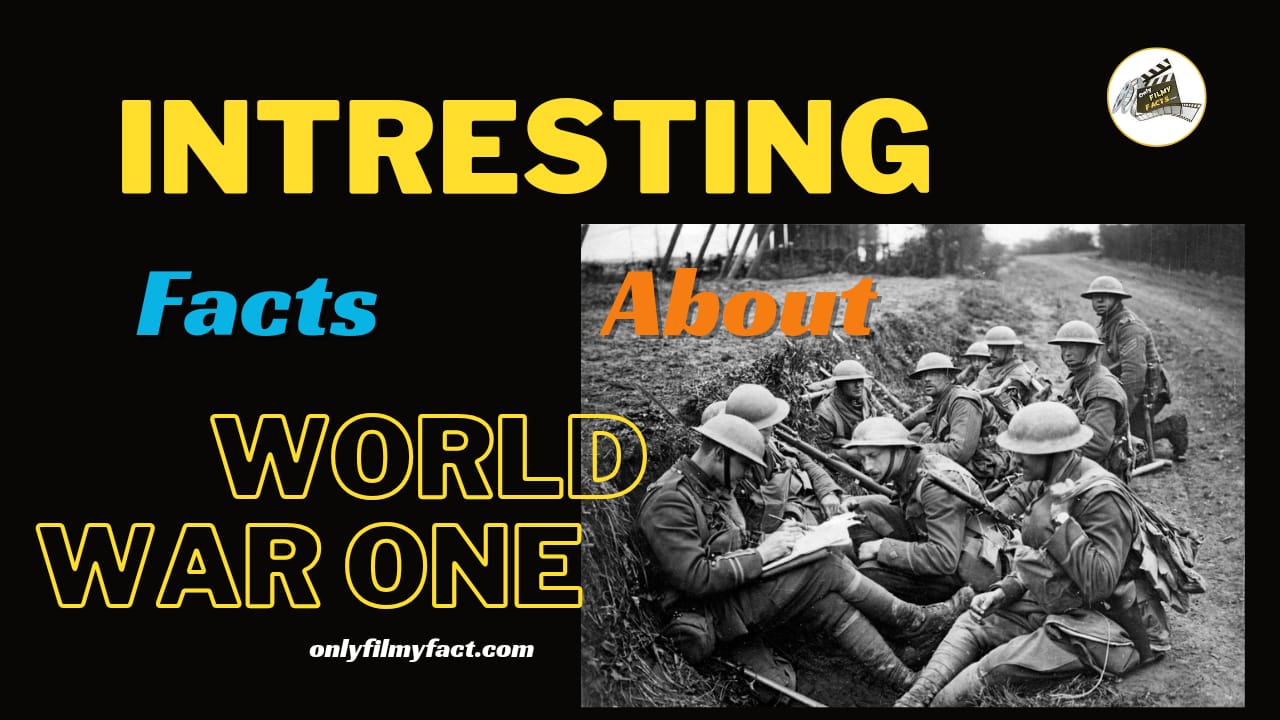Introduction
Facts about World War 1: Conflict has always had a lasting impact on human history, & World War 1 is no different. Between 1914 & 1918, a worldwide conflict ravaged much of the planet, causing unimaginable destruction and upheaval. This article will explore the dark corners of history to unearth ten startling facts about the 1st World War that provide insight into its scope, consequences, & lasting effects.
During World War 1, there are 38 million soldiers died, were injured, or disappeared.
In 1914, 1st World War Started, at least 9 million people died.
There were more than 20 million people are injuried.
1. The Spark That Ignited the Flame
The Assassination of Archduke Franz Ferdinand
- A Bosnian Serb nationalist named Gavrilo Princip killed Archduke Franz Ferdinand of Austria-Hungary and his wife, Sophie, on June 28, 1914, in Sarajevo, Bosnia.
- This incident served as the impetus for the start of World War 1, setting off a chain reaction that quickly increased tensions between the European powers.
“The shot that rang out in Sarajevo reverberated around the world, setting in motion an unfathomable chain of events.”
2. The Total War Mobilization
The Involvement of Colonial Empires
- European colonial empires participated actively in World War 1 as suppliers as well as fighters.
- Over four million non-European soldiers from colonies in Africa, India, & Canada fought in the war as supplies ran out.
- Their participation in the war helped some colonial powers eventually fall, exposing more gaps in imperial policies.
3. The Trench Warfare Stalemate
The Grueling Life in the Trenches
- The terrible trench warfare that defined World War 1 claimed the lives of thousands of soldiers.
- Trenches crisscrossed hundreds of miles, forming a lethal labyrinth of disease, rats, & mud.
- An estimated 10 million soldiers lost their lives in combat as a result of continuous shelling, exposure to poison gas, and the psychological effects of living in the trenches.
4. The Deadly Weaponry
The Introduction of Chemical Weapons
- Chemical weapons like mustard & chlorine gas were widely used during World War 1.
- These terrible chemicals were terrifying weapons of mass destruction because they could cause blindness, deformity, and unbearable pain.
- Due to the employment of chemical weapons during the conflict, international conventions eventually forbade their use and condemned it.
5. The Waning Power of Old Orders
The Overthrow of Long-Standing Monarchies
- Many long standing monarchies & Empires came to an end during World War 1.
- New nations and ideologies rose to prominence as a result of political and social upheavals brought about by the fall of the German, Austro – Hungarian, Russian, & Ottoman empires.
6. The Power of Propaganda
The Birth of Modern Propaganda Techniques
- Propaganda became a potent weapon during World War 1, influencing public opinion & Galvanising support for military endeavours.
- Both sides’ governments used highly skilled propaganda strategies, such as films, publications, & posters, to enlist their people in the military.
7. The Magnetic Pull of the United States
America’s Entry into the War
- The United States initially remained neutral, but it was too tempting to join World War 1.
- Public opinion was greatly influenced in favour of war by the German submarine that sank the RMS Lusitania, an ocean liner carrying American passengers, in 1915.
- With it’s formal entry into the war in 1917, the United States helped the Allied Powers achieve a turning point that ultimately resulted in their victory.
8. The Treatment of Women
Women’s Contribution and the Suffrage Movement
- There were significant shifts in women’s roles in society following World War 1.
- Women entered the workforce in a variety of fields, demonstrating their abilities & Igniting the movement for women’s rights as millions of men joined the military.
- Women’s suffrage gained momentum after the war, & as a result, they were given more social and political recognition.
9. The Birth of New Nations
The Dissolution of Empires
- A number of new countries were born as a result of the First World War, which was a turning point in the geopolitical landscape.
- From the ashes of fallen empires, nations like Poland, Czechoslovakia, & Yugoslavia Rose to prominence, changing the face of Europe and beyond.
10. The Seeds of Future Conflict
The Versailles Treaty and Unresolved Issues
- Germany and the Central Powers suffered severe consequences as a result of the Treaty of Versailles, which put an end to World War 1.
- Resentment was stoked by the treaty’s perceived injustices & economic hardships, which changed the course of history and ultimately sparked World War 2.
Facts about World War : Conclusion
Even 100 years after the 1st World War, its effects are still felt. A few of the many tales that serve as a constant reminder of the sacrifices and complexity of this worldwide struggle are the assassination that started the war, the trenches that left generations of people scarred, & the founding of new nations. We can create a path towards a more peaceful and just future by comprehending and keeping in mind the significant ways that World War One shaped our contemporary world.
“The lessons of World War 1 remind us of the fragility of peace and the importance of striving for unity in the face of adversity.”
